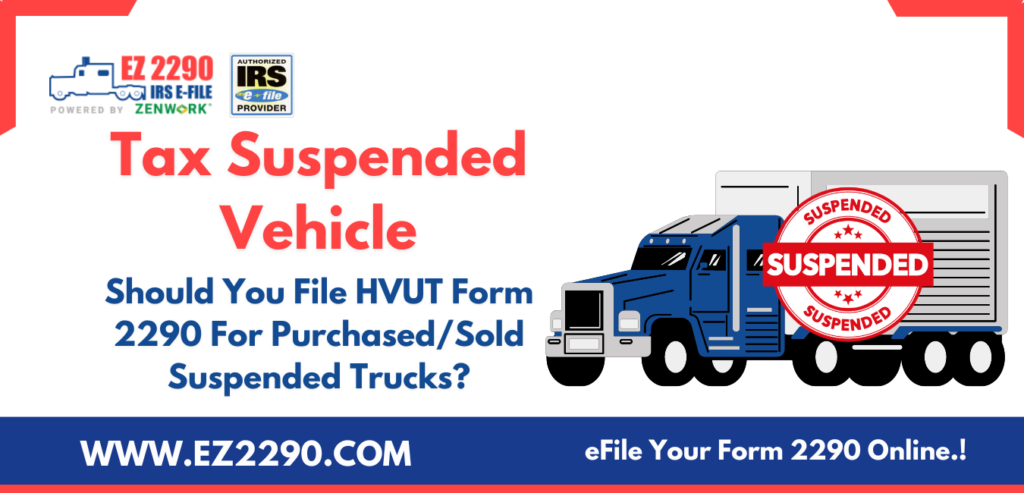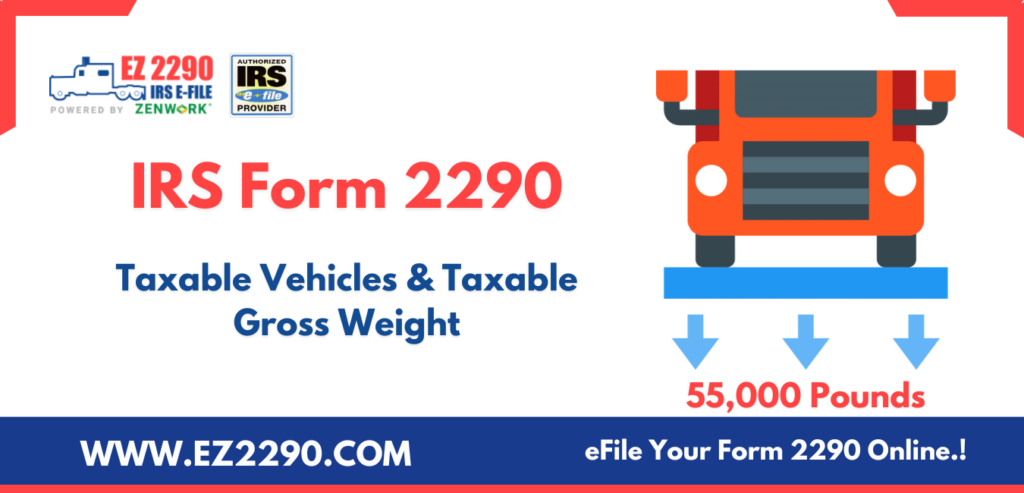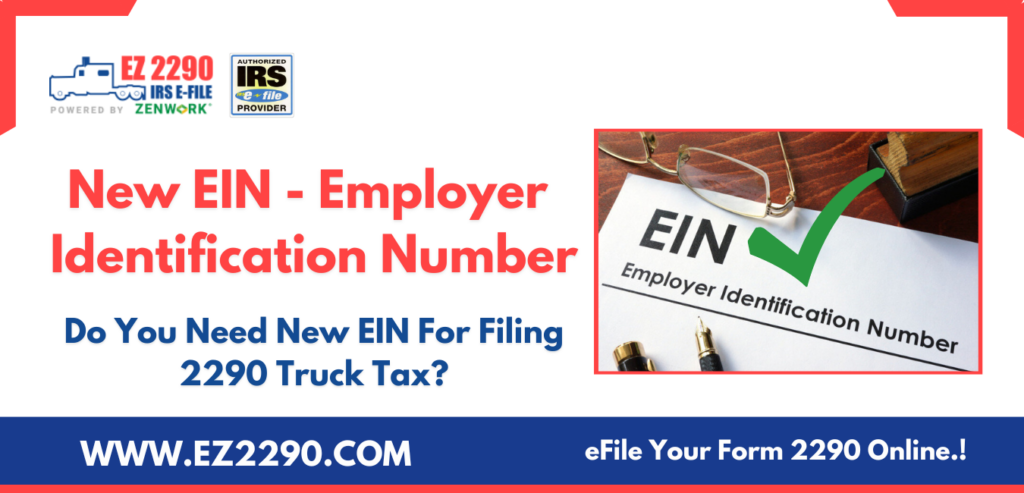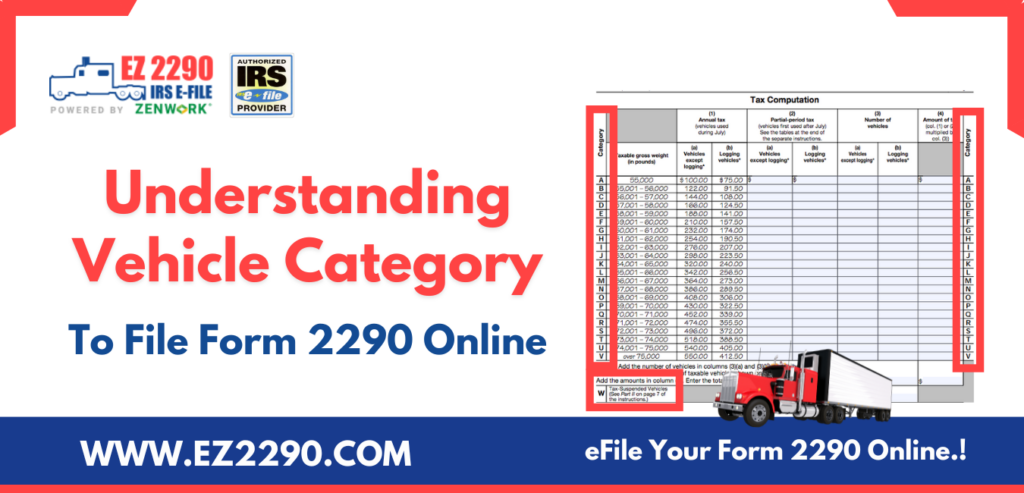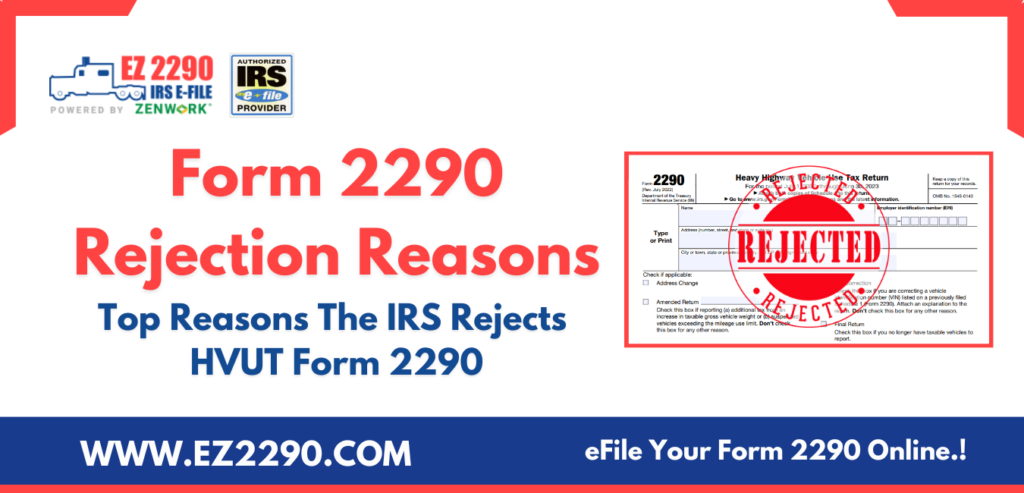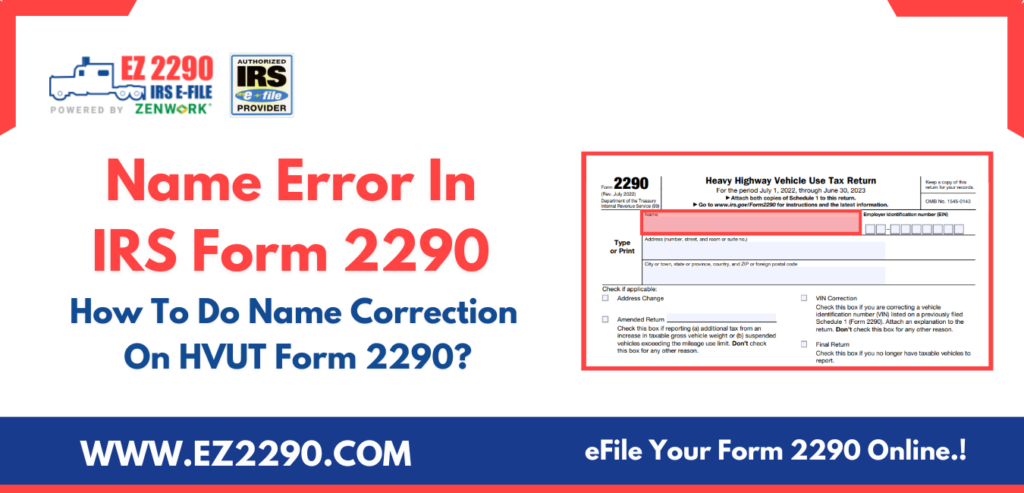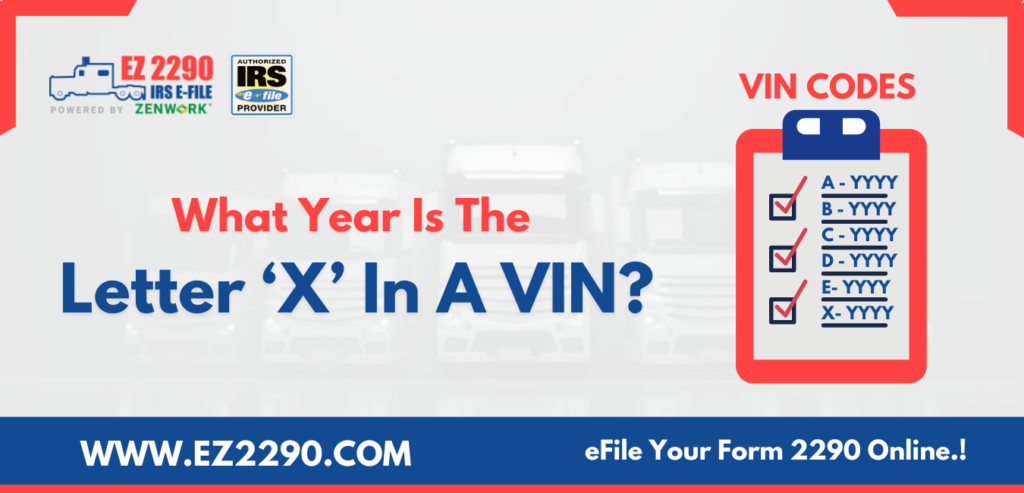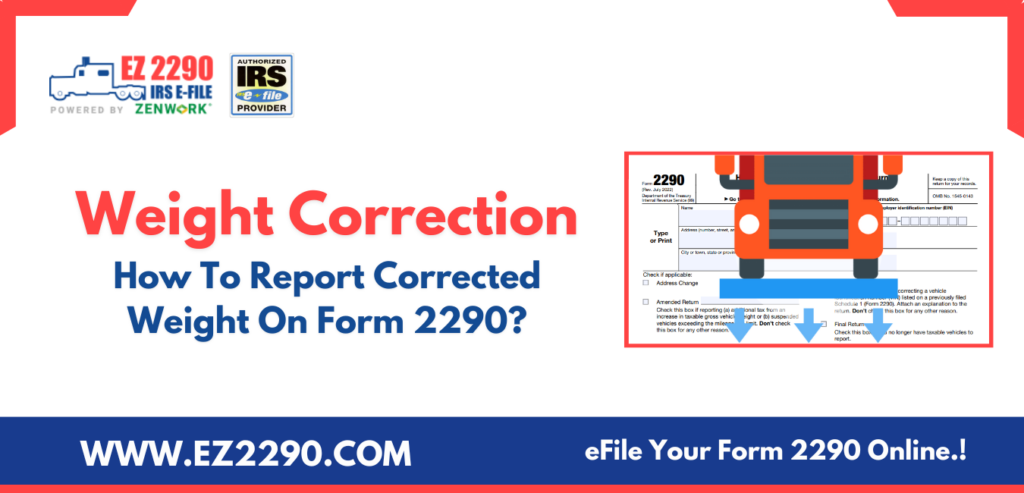
Here’s how you can report the corrected weight of a heavy vehicle on HVUT Form 2290.
Vehicle weight is something that is not discussed enough when it comes to Form 2290 reporting.
The gross taxable weight of the vehicle helps determine the tax burden on the trucking company.
If you’re managing a fleet, and you have a variety of trucks and vehicles with varying weights, you need to pay attention to this aspect.
The weight of the vehicle plays a significant role in the Heavy Highway Vehicle Usage Tax (HVUT) reporting regime.
You see, the heavier the vehicle, the heavier the impact on the road, which gives rise to wear and tear, and eventual damages.
Considering how a heavy vehicle utilizes the highways compared to a lighter vehicle, the Federal Highway Administration imposes a certain tax on heavy vehicles.
This tax is applicable to vehicles that meet certain weight and mileage utility metrics.
Upon qualification, these vehicles are subject to HVUT taxes. The trucking company or the owner of such vehicles is required to pay the HVUT.
However, the weights of these vehicles change when additional equipment or components are added.
Such an increase in weight must be reported to the IRS.
The logic goes: heavier the vehicle, heavier the tax.
And if the weight of the vehicle decreases, the owner of the vehicle or the trucking company that owns and operates these vehicles gets relief from HVUT.
But how exactly should you communicate such changes in vehicle weight to the IRS?
How do you report weight corrections on Form 2290?
The following discussion will focus on several aspects of 2290 vehicle weight.
So, let’s get to it.
What Is The Gross Taxable Weight Of The Vehicle?
The gross taxable weight of a vehicle is the unloaded weight of the vehicle.
Some even refer to this weight as the “empty weight” of the vehicle.
To put it simply, this is the weight of the vehicle before any goods or commodities are loaded.
However, this weight should include the component weight of the vehicle such as flat beds, engine, and other equipment.
HVUT 2290 Reporting: Weight Qualification
A vehicle is subject to HVUT tax when the weight of the vehicle is 50,000 pounds or more. The IRS imposes a $100 tax on vehicles with this standard weight and imposes an additional $22 for every 1000 pounds it adds to the gross weight.
In order to qualify for the HVUT tax, the vehicle (if non-agricultural) needs to drive 5000 miles or more, and 7,500 miles (if agricultural vehicle), respectively.
The month of first use and the weight of the vehicle are the primary factors that determine the HVUT imposition on a vehicle.
When The Gross Taxable Weight Increases
Sometimes, additional equipment, components, and safety gear are added to the vehicle, which makes up the essential and non-negotiable part of the vehicle.
In such a case, the components add additional weight to the vehicle and cannot be ignored.
When the weight of the vehicle increases, the same must reflect in your 2290 returns.
The IRS mandates that an increase in the gross taxable weight of the vehicle must be reported on the 2290 form by filing a 2290 Amendment.
Form 2290 Amendment specifically deals with mileage use limits and an increase in the gross taxable weight of the vehicles.
So, let’s assume that your vehicle initially weighed 56,000 pounds.
However, additional equipment and components were added to the vehicle, which increases the total gross weight of the vehicle to 58,000 pounds.
The additional 2,000 pounds will be subject to tax from the date on which the weight was changed.
The same must be reported on Form 2290 Amendment specifically.
When The Gross Taxable Weight Decreases
Let’s assume that the vehicle weight has decreased to 48,000 pounds from the previous weight of 56,000 pounds. Maybe you removed some components or switched to better equipment that weighs less.
This means your vehicle no longer meets the gross taxable weight threshold as required by the IRS.
Your vehicle, in such a case, will be suspended from HVUT taxes. However, the mileage utility limit will also be considered for such a use case (considering the weight change history of the vehicle).
The conventional approach is that vehicles weighing less than 55,000 pounds are not subject to HVUT.
Regardless, your trucking company still needs to file a 2290 form to communicate the same (even though you won’t be paying taxes).
Report Weight Correction On Form 2290
Understand the concept of the gross taxable weight of the vehicle before you report the weight changes on the 2290 form.
Determine the weight of the vehicle accurately.
Proceed to file a 2290 Amendment if the gross taxable weight of the vehicle increases.
File a fresh 2290 return and report the corrected weight accurately (if you previously reported the wrong or incorrect weight of the vehicle). You may have to pay 2290 tax again with the fresh filing.
However, you can request a refund from the IRS for the previous incorrect filing by filing Form 8849. You will have to cite the reason for requesting the refund and produce documentation (proof) to back up your claims. However, the refund request may not always be approved by the IRS.
eFile 2290 Amendment Online With EZ2290
It’s essential to note that Form 2290 must only be filed if the gross taxable weight of the vehicle increases or if the mileage usage limit is exceeded (beyond 5000 miles for non-agricultural vehicles and beyond 7500 miles for agricultural vehicles).
You can easily file the 2290 Amendment online with EZ2290 – an IRS-authorized eFile provider.
With our super-convenient and secure e-filing experiences, you can transmit your 2290 Amendment online to the IRS within a few moments.
Even if you haven’t filed your 2290 returns with us, you can still file the 2290 Amendment online with EZ2290.
EZ2290 offers:
- Easy 3-Step eFile experience
- Bulk 2290 eFile solutions
- Automatic tax calculations
- Secure & encrypted form completion
- Free VIN Corrections
- Free re-filing for rejected returns
- 24×7 priority 2290 support
View All Features | eFile 2290 Amendment
Don’t have the time to eFile your 2290 returns? Switch to Managed Services.
